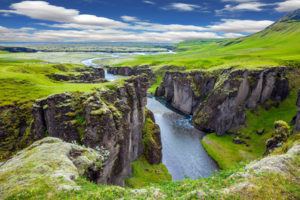Icelandic literature has a long history which could be dated back to the year 1000. However, when looking at Icelandic literature you should not only consider the ancient Skaldic poetry or the Eddas. Icelandic literature is well known for its great Sagas from the Middle Ages, but it is also important to look at the newer novels that have come from this small country.
The Eddas And Skaldic Poetry
 The Eddas is one of the oldest known documents of Old Norse stories and poems. This collection has been attributed to an Icelandic priest and scholar and was written in the late 10th century. While the poems and stories actually originated on the Scandinavian mainland they were written down in Iceland and as such have been attributed to Icelandic literature.
The Eddas is one of the oldest known documents of Old Norse stories and poems. This collection has been attributed to an Icelandic priest and scholar and was written in the late 10th century. While the poems and stories actually originated on the Scandinavian mainland they were written down in Iceland and as such have been attributed to Icelandic literature.
The first manuscript of the Poetic Edda was created in the 13th century and found in 1643 in southern Iceland. The Younger Edda was written later and is the main source of our modern understanding of old Norse mythology. There are also a number of medieval Icelandic poems, mythological stories and kennings in the collection. The primary use of the Younger Edda was to be a manual for Icelandic skalds.
The Skaldic poetry of Iceland was very different to that found in the Edda. This is generally due to the fact that each poem was created by a well-known Skald or Icelandic poet. The poetry was also sung instead of spoken and would generally be to commemorate or satirize current events. This poetry used a very strict metric system with figures of speech to create literary structure.
The Icelandic Saga
Icelandic sagas were written in the 13th and 14th century and are considered unique for a number of reasons. The sagas did not have the same structure as chronicles and would be styled in a manner that is similar to modern books. The stories would also be told with a level of artistry that was very different to other writings of the time. There is no information about who actually wrote the Icelandic sagas and this is a mystery that is still unsolved today.
 The topics of the sagas range from the settlement of Iceland and the division of the land between the families who came to the country. They also cover the establishment of the laws of Iceland and the overall structure of the society. The sagas also tell of the initial conflicts in the country which were based on honor and personal interests.
The topics of the sagas range from the settlement of Iceland and the division of the land between the families who came to the country. They also cover the establishment of the laws of Iceland and the overall structure of the society. The sagas also tell of the initial conflicts in the country which were based on honor and personal interests.
The conflicts that are depicted in the sagas were often a development of complex patterns of retribution and violence. Historically, these conflicts ended in the civil war that tore through the country in the 13th century. This civil war would lead to Iceland being controlled by Norway and later Denmark.
The Icelandic Novel
After centuries of Danish rule, Iceland started the struggle for independence in the 19th century. Iceland gained independence in 1944 and shortly after this the first novel in the Icelandic tradition that we now know was created. The novel was as far removed from the Icelandic sagas as a novel could be.
The novel was a characterization of the new subjectivity that the modern world had brought to Iceland and that it was there to stay. The book, Bref til Laru, was a hybrid text which combined essays, fantasy, short stories and letters. The subjective and self-expressionism of the book was very different to Icelandic sagas and at first made the readers uneasy.
This was just the start of the new wave of Icelandic literature. The newer contemporary style of writing would continue and an Icelandic writer would win the Nobel Prize for infusing new life to Icelandic literature.
Visiting Iceland
Many visitors take Iceland tours to visit the many inspirational sites about which much of the Icelandic literature was written. Not only does a visit to Iceland provide historic significance to the literary works, but also inspiration to aspiring writers, as well.